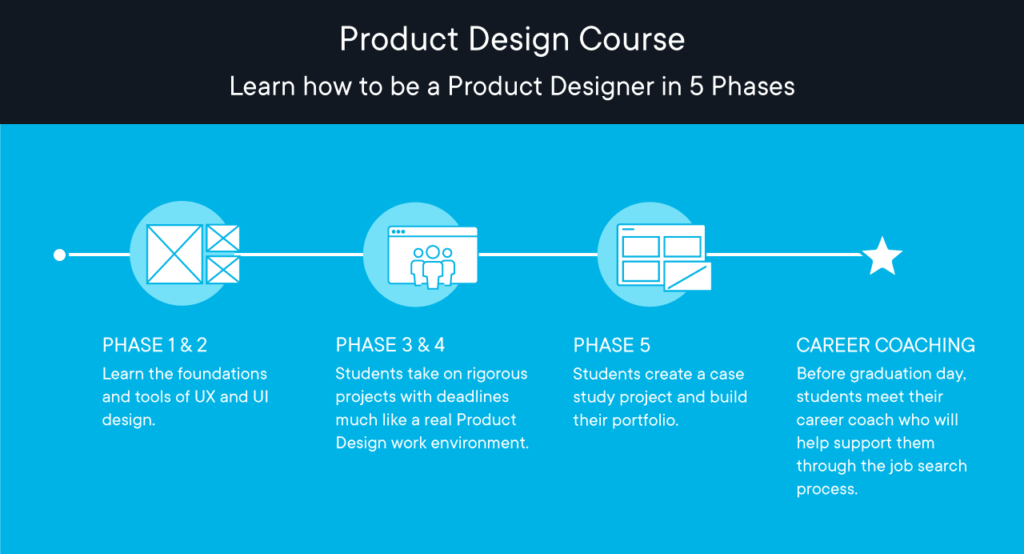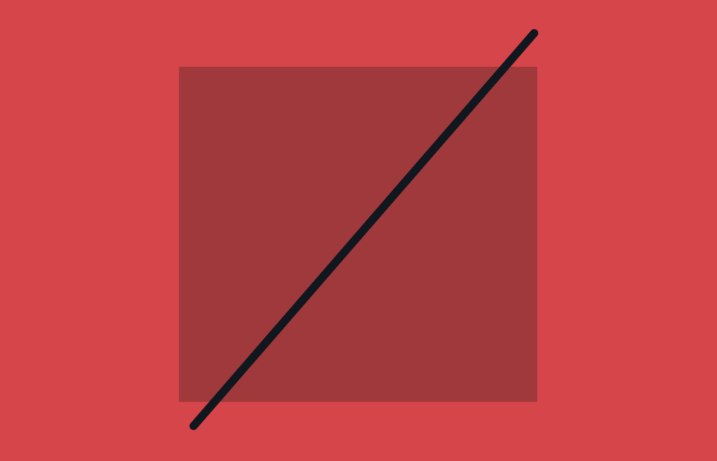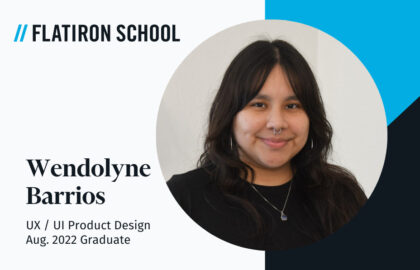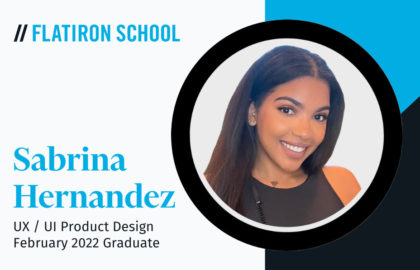“Why doesn’t your product design (PD) program require a client project? Don’t I need one?” A prospective student asked me these questions recently while she was trying to decide which bootcamp to choose.
Does Flatiron School include client projects?
Here’s why we decided not to include client projects in the product design curriculum, how that decision frees our students to build a more impactful portfolio, and some insights about an often-overlooked client-interaction skill that we build into our programs.
One big project versus a comprehensive portfolio
Why no client project? The short answer is that you don’t need a client project in your portfolio to show hiring managers your skills. Often your skills are overshadowed by your client’s needs and demands. Your curriculum is planned to demonstrate your skills in detail resulting in a comprehensive portfolio that takes time and focus—two things that a client project doesn’t guarantee.
To help you get the most value from your time in our program, we choose to focus on developing the entire range of skills needed to work in product design. When the program centers on the interactions between you, your peers and your instructors, this works consistently well.
If we add a client to the mix, then we’re adding a variable that can affect the overall quality and outcome of your experience. That’s because clients vary in their ability to write a clear brief, to provide all the assets you might need, and to provide a process to fully support you while you work on their project. That can lead to you and your instructor spending valuable time addressing client issues rather than building more of the skills you need for your new career.
We’d rather have you finish our program with all the skills you need to get hired and start working. We do this by starting small and progressing to more complex projects as your skillset grows.
By the time you’re working on your case study project in the program, you’re not only handling all the technical aspects, but you’re also making and defending the decisions the way a product designer would be expected to in real life.

A portfolio tailored to highlight your strengths
With a curriculum that allows you to build this kind of project list, you gain the knowledge about what you’re best at, what you like doing most, and how you want to present your skills and interests to hiring managers—all without the potential distractions and hurdles of working with an outside client at the same time.
For example, maybe you rock at research but struggle a bit with polishing wireframes and applying UI design. You can highlight your research project in addition to the full-fledged case study. If you enjoy the UI stuff much more, you can feature your smaller projects where you polished UX and UI deliverables. Good at both? You can show off both types of projects.
Communication: the skill that helps you put your portfolio skills into practice
While we’re helping you build your portfolio, we’ll also be working with you on a skill that every product designer needs: communication. Flatiron School emphasizes communication skills from day one through the last day of your course.
Our goal is for you to finish the program with the skills to communicate clearly about what’s in your portfolio, what you do best, and the kind of role you want—and to communicate with teammates, developers and stakeholders in your new career.




